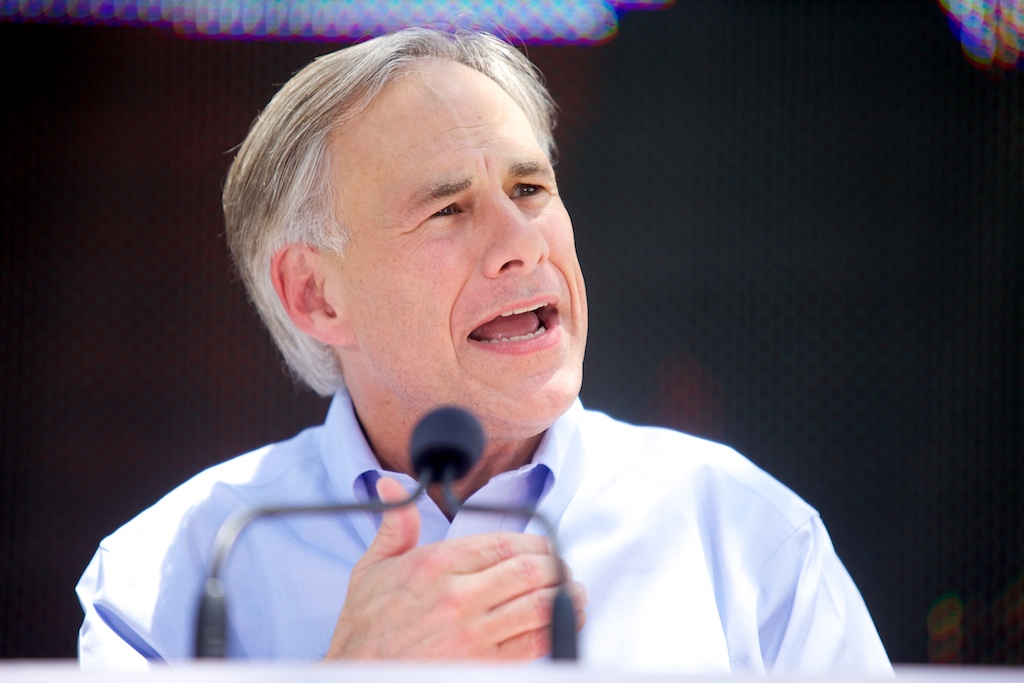
Greg Abbott’s Big Idea: Make Austerity Permanent

On Monday, Greg Abbott, who has been very light on the policy proposals so far, finally unveiled some Big Ideas at a campaign stop in Brownsville. In a sign that Abbott, like Rick Perry, is willing to borrow budgeting ideas from the libertarian fringe, he proposed a suite of changes to the fundamentals of state budgeting that would effectively put Texas in a permanent state of austerity and dramatically expand the governor’s budgeting authority. None of the ideas is new, exactly—and few, I think, have a chance of going anywhere.
Texas Monthly‘s Paul Burka, in blasting the proposal, probably spoke for a lot of people who were hoping Abbott would back away from some of Perry’s excesses: “The only solace one can take in Abbott’s vision for the future of the state is that it resolves the question of whether he would be better or worse than Rick Perry. Astonishing as it may seem, I think he is worse than Perry.”
Let that sink in: Worse than Perry.
Billed as “A Working Plan for Texans,” Abbott’s proposal is basically a list of proposed constitutional amendments he’d like the Legislature to put before voters. So, the Legislature would have to willingly give away some of its power and then voters would have to be convinced to sign off. That’s a long shot, at least where things stand now.
One of his amendments to the state constitution would link state spending to population growth and inflation. Currently, the Texas Constitution ties spending to personal income, a more generous limit because the state’s economy tends to grow faster than population plus inflation.
Another would impose restrictions on the use of the state’s Rainy Day Fund, a multi-billion-dollar fund that’s become the object of a perpetual legislative tug-of-war.
Abbott would also like to grant himself more power to line-item veto budgetary items. In addition, he would end so-called budgetary diversions—the practice of collecting taxes or fees intended for a specific purpose—e.g. the tax on sporting goods that’s supposed to pay for parks and wildlife—but instead holding the money in order to balance the budget. It’s the sort-of green-eye-shade alchemy that drives both left and right nuts, but could, under the strictures of the Abbott plan, lead to deep cuts to core services (read: public schools and health and human services).
The idea of tying spending to inflation and population growth is not a new one. It’s been popular among elements of the right for years. The Texas Public Policy Foundation, uber-activist Michael Quinn Sullivan and even Perry have flogged the proposal for years. But it’s never gone anywhere for two main reasons—one, there is little appetite in the Texas Legislature for tying their own hands; two, it’s a bad idea.
Texas is already a (relatively) low tax, minimal services, small government state. Indeed, as Nate Blakeslee pointed out in a January Texas Monthly profile of Sullivan, state spending as a share of both the state’s gross domestic product and personal income has been trending downward for two decades. For personal income, which is what the Comptroller uses to set a spending limit, the share of spending has decreased from around 5.2 percent in the early ’90s to just over 4 percent today. Even using the population-plus-inflation spending limit, Texas’ budget has stayed under that limit for the last decade, according to an analysis by the Legislative Budget Board.
In other words, there’s just not a spending problem in Texas. Which is not the same thing as saying there’s an inequity problem when it comes to how revenues are collected (not having a state income tax, for example, means the poor and middle class take it on the nose with regressive sales and property taxes).
Still, tying the state’s budget to inflation and population growth could further constrain state government. You could pretty much forget about ever investing more in public schools, higher education or infrastructure, at least during non-flush times.
In April, the Legislative Budget Board crunched the numbers. The growth in personal income used to set the spending cap for 2014-2015 was 10.71 percent. In other words, the state could spend almost 11 percent more than it had the previous biennium. Using population growth plus inflation instead would limit spending growth to 6.82 percent. That would mean $2.7 billion less for state leaders to work with. That’s not a huge number given that the 2014-2015 state budget includes $95 billion in general revenue. But lowering the spending limit now would have a compounding effect over time.
That’s probably the point—force future generations to subscribe to the current model of low-ish taxes and minimal services. Abbott more or less admitted as much during a press confab after his Brownsville speech.
“By imposing these standards by constitutional provision it means that for generations there will be limits in the growth of spending in this state,” he said, according to the Associated Press.
However, the Legislature has shown little appetite for any of the proposals Abbott is touting. A bill tying the spending limit to population-plus-inflation is filed every session… and goes nowhere.
“I think that even the conservative Legislature of the past few cycles has come face-to-face with the reality that they need to spend money on our physical infrastructure and our human infrastructure too,” said Dick Lavine, with the liberal Center for Public Policy Priorities. “They understand that we’re scraping along the bottom as it is.”


